There’s beef and then there’s beef. There’s steak and then there’s real Japanese A5 Wagyu steak. All that tenderness, all that marbled fat, all that incredible texture. Wow. We love American Wagyu as much as the next guy, but there’s just something so special about the Japanese version that inspires it.
Here, we’re going to discuss how to cook this amazing, and very expensive, cut of meat. This is one cook you absolutely want to get right.
What is Japanese Wagyu beef?
Wagyu beef comes from wagyu cattle, and—right off—we can note that “Japanese wagyu” is redundant, because “wagyu” literally means “Japanese cattle.” Wagyu beef comes from four breeds of cattle developed in Japan over the last hundred years, the most common being Kuroge Washu, also called the Japanese Black. All the wagyu breeds are descended from native breeds that were crossbred—sometimes with European cattle breeds. Now, all wagyu cattle in Japan are registered with a central office and their breeding is strictly monitored to prevent unwanted crossbreeds as well as problematic inbreeding.
What we often mean when we say “wagyu beef” is actually “Kobe-style beef.” In the region of Kobe, the cattlemen created rules for how those cattle could be bred and raised, all of which resulted in supremely fatty, extremely well-marbled meat. Kobe beef wasn’t exported until 2012, but it is now available through specialty retailers like themeatery.com, from whom we got our steak.
Grading and authenticity
The Japanese beef grading system has a top grade of A5, which reflects marbling as well as other factors. An A5 wagyu steak is the top of the line. But even among A5 steaks, there are differences. Wagyu beef also receives a BMS score, which is a further measure of fat content and marbling. A steak that is BMS 12 is nearly white with fat. We used a steak that was BMS 9 for this cook and it was incredible. One can only imagine what a BMS 11 or 12 would be like!
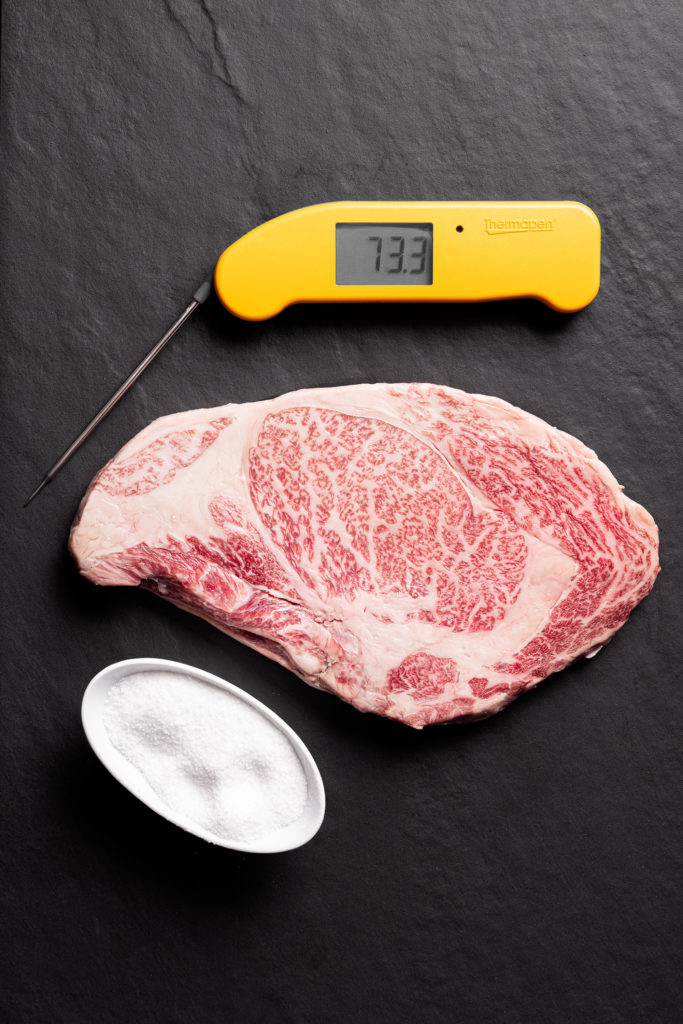
Now, faking marbling like that just isn’t possible. But just to be on the safe side, real wagyu comes with a certificate identifying the cow from which it came, including the cow’s unique nose print. Does the certificate make the steak better? No. Does it show a dedication to care and effort that is reflected in the quality of the meat? Yes.
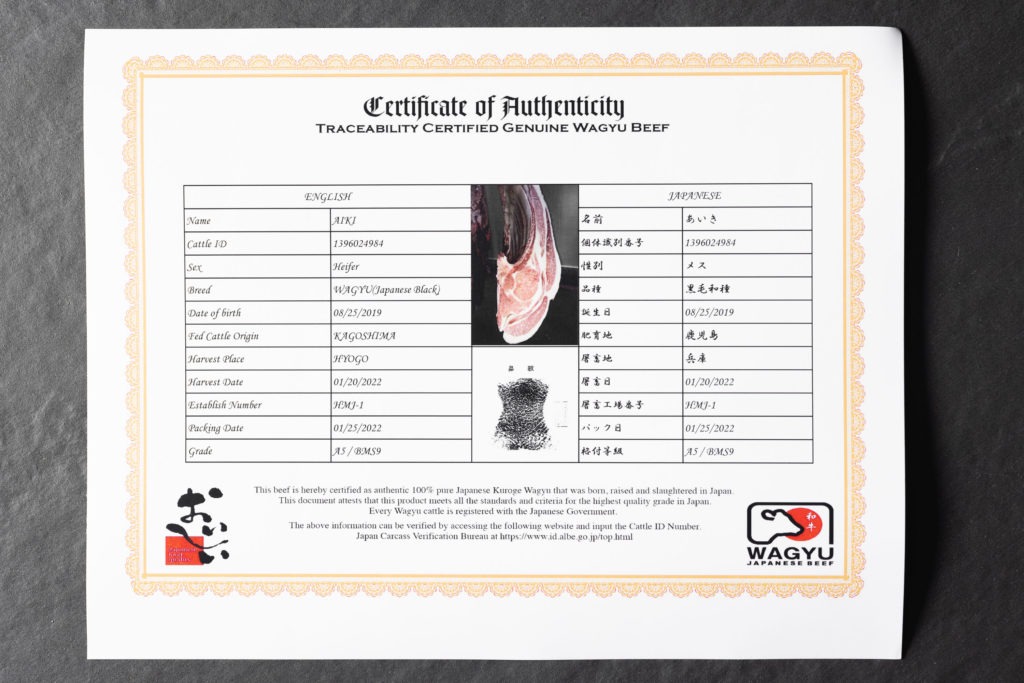
Thermal principles for wagyu steak
All that care and effort, all that marbling and tenderness demand care on the part of the cook. Of all the meat you don’t want to overcook and ruin, this is at the top of the list! Cook it right, paying attention to how heat is interacting with the steak, to make the most of your experience.
Salt it first
You can live your life and spend your money however you want, but let’s be very clear about something here. This steak is about the meat. It’s about the beef. This is not a place to cover any flavor, it needs no “enhancing,” and it certainly doesn’t need any tenderizing. All this meat needs is some salt. Ok, maybe a little pepper can be ground on after it’s cooked, but nothing else. Keep your rubs in the cupboard. Salt only.
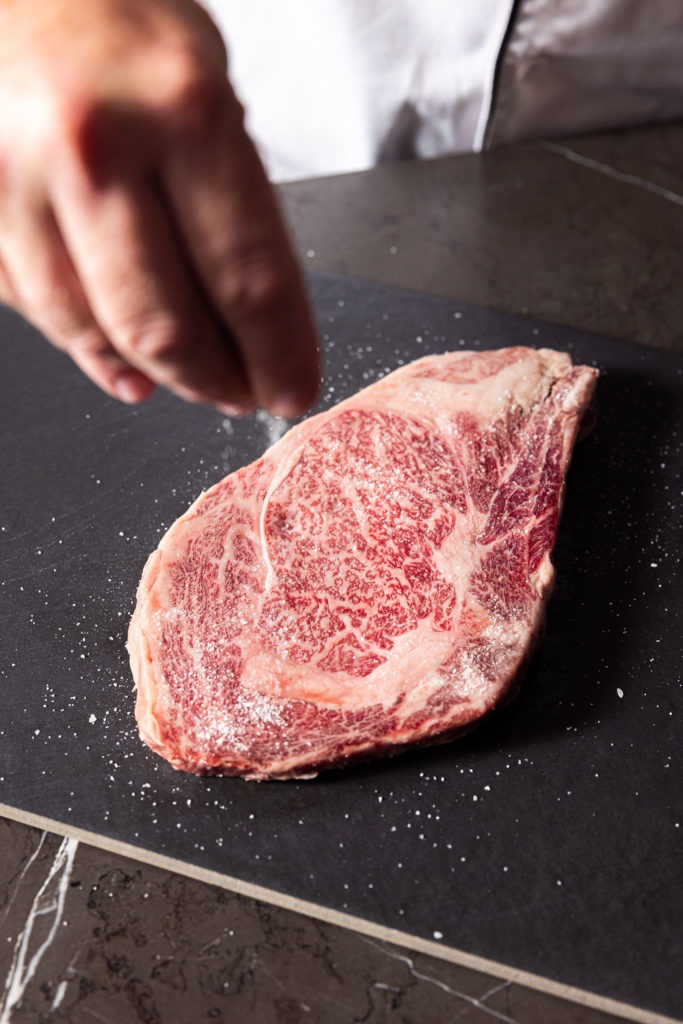
But when should that salt be added? It’s best to salt your wagyu steak pretty well in advance of cooking. Give it a good seasoning with kosher salt and put it back in the fridge for at least an hour—up to overnight—while the meat absorbs the salt and releases excess moisture near the surface. Doing it in advance, instead of right when you’re about to cook, will deepen the flavor and it will help you get a better sear. Pat off the surface of the meat with a napkin before you sear it to take up any moisture that has migrated to the surface. Now you have a steak that is well and deeply seasoned, and you have less moisture to cook off before your steak starts to brown. Excellent.
Keep it cold
The fat in wagyu beef melts at a lower temperature than other—lesser—beef fat. As soon as you touch a wagyu steak the fat starts to melt. Because we want to retain as much of that luscious, rich fat within the meat, we find it best to cook the steaks from cold rather than letting them come up to room temp.
Yes, yes. We know. So many sites say to let the steak warm up a bit. But really, if you do that you’re going to drop fat into the fan even faster than you would if with a cold steak. Not only will you be losing precious fat, but it’s also just good thermal sense to have the inside of the steak cold if we want it to end up being rare or medium rare. Why would we want to start with meat that is 40°F closer to done?!? We want a center that is barely cooked, and getting it warm before it goes into the pan isn’t going to make that happen. Keep your steak just above freezing temp until it’s ready to hit the pan.
Cook it hot
The only thing a beautiful wagyu steak lacks is a brown, meaty crust, and for that, we need a good, hard sear. The hotter we are about to sear the surface, the less we’ll overcook the inside of the steak, so we need a hot pan. We need our pan to be at least 425°F (218°C) to get the sear we want.
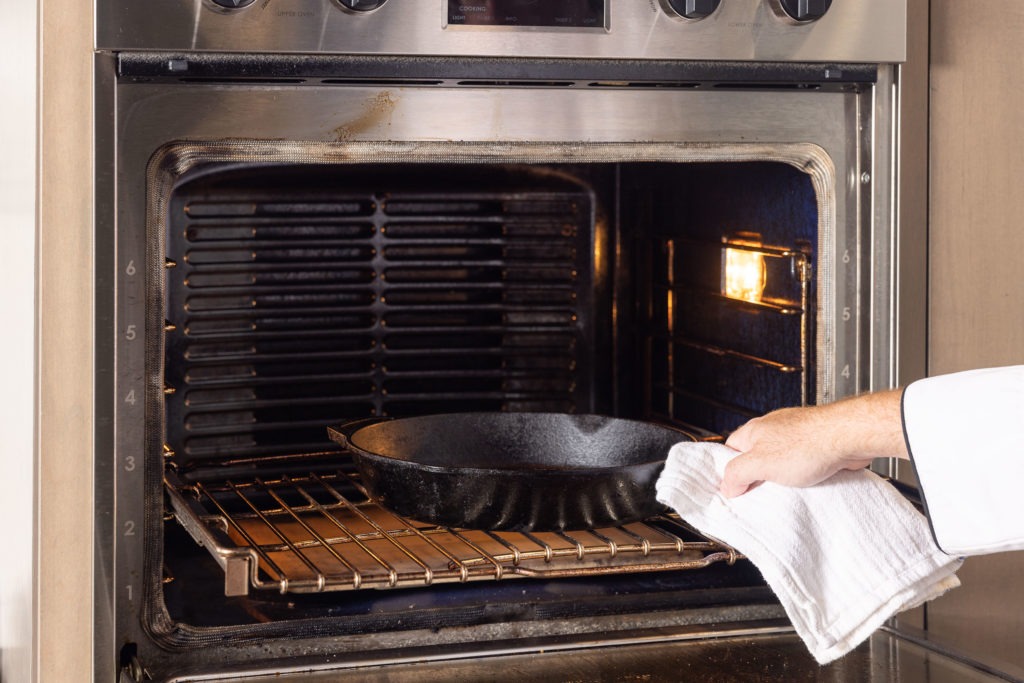
To make sure the pan is evenly heated, with fewer hot or cold spots, put a cast iron pan in the oven and heat the oven to 425°F (218°C). Allow the pan to sit in that hot oven for a few minutes, then move it onto the stove and turn the heat on to medium-high. Keeping heat pumping into the pan is important to get a good sear. Before you introduce a steak to the pan, check its temperature with a good IR thermometer to make sure it’s hot enough.
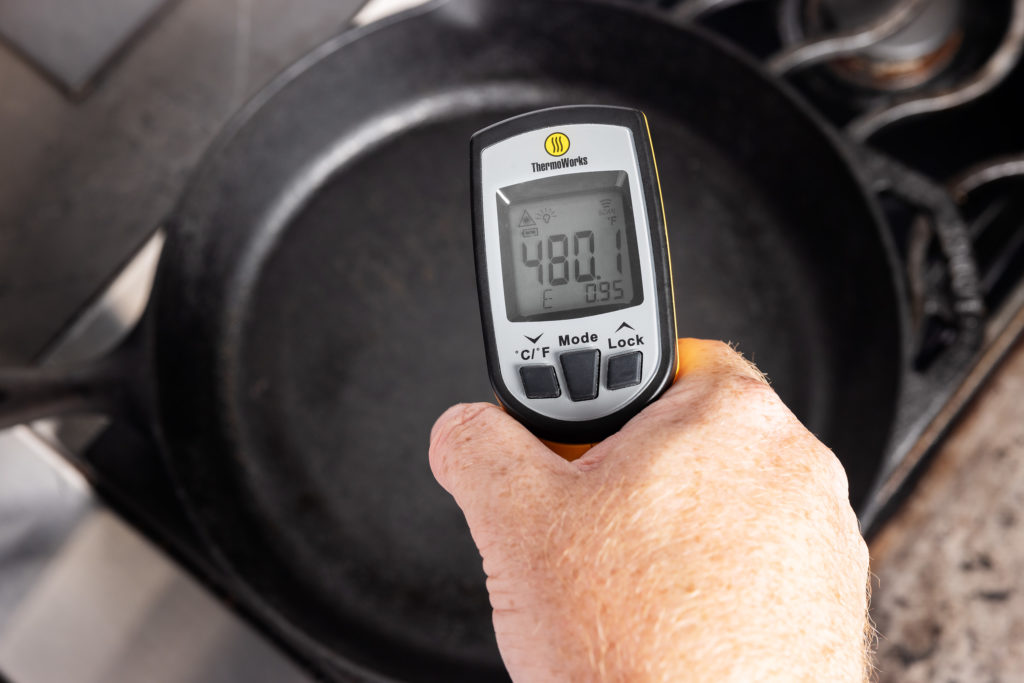
Flip the steak
Our steak was rather thin, and that means it’s in special danger of overcooking or of cooking unevenly. To combat that tendency, we flipped our steak often, about every 60 seconds. By pumping heat into the surface of the steak and then flipping it, we create the crust we want, without forcing more heat down into the meat. This is much like cooking on a rotisserie and is a stove-top version of the “just keep flipping” method.
Wagyu steak doneness temperature
After the second flip, it’s time to start taking the temperature of your with your Thermapen® ONE. The sensor of Thermapen ONE is small enough and fast enough to temp even very thin steaks, giving you the thermal information you need to make decisions on your cook. Because we want a nice rare to medium-rare steak, we took this steak off of heat at about 125°F (52°C). Let it go much longer and you’ll risk draining out too much fat and drying the meat.
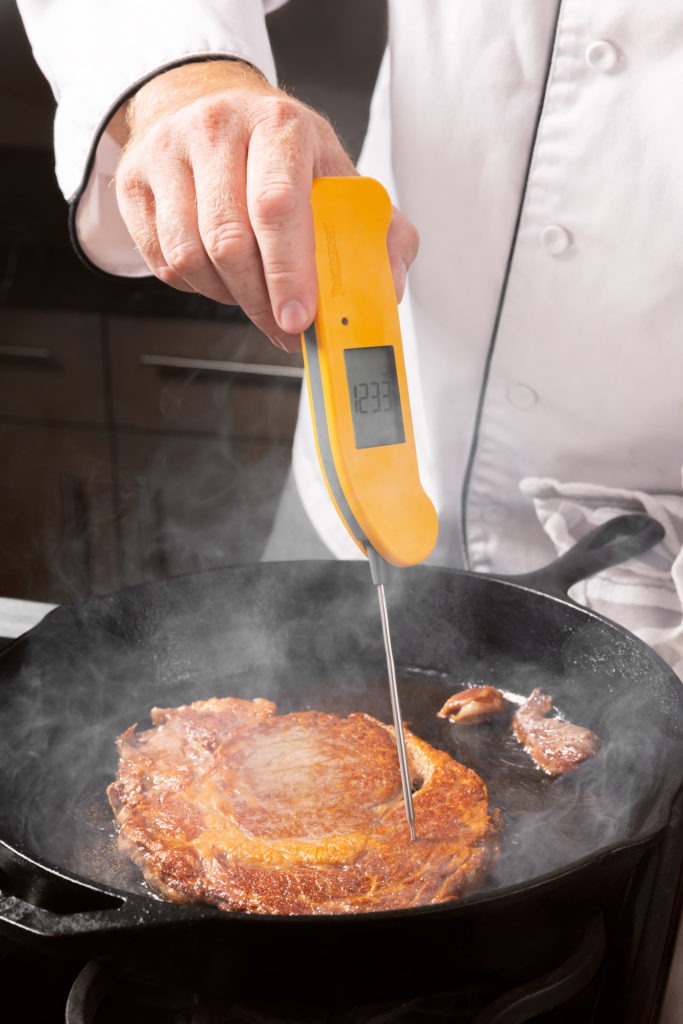
Let the steak rest for at least five minutes before cutting in.
Serving and eating wagyu steak
As much as we want to eat a whole steak like this, it’s just … not necessary. The flavor is so rich, the mouthfeel is so unique and luxurious, you don’t need much of it to satisfy. In fact, eating a whole steak can cause many people an upset stomach because the gut isn’t well equipped to handle that much fat all at once.
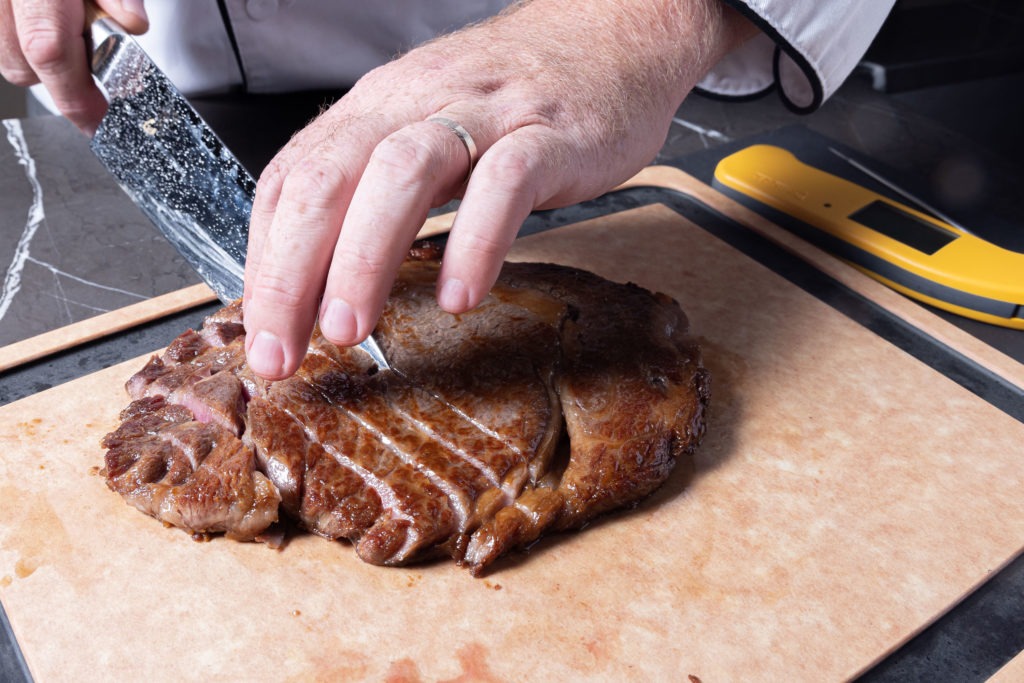
This is a steak that is best when shared. Slice it thinly and divvy it out to people that you care about. Cut it into chunks and let people grab it with their fingers. Hit it with that little bit of pepper we mentioned earlier, if you want, and take it slow and easy. Feel it in your mouth. Taste it. Enjoy the fattiness that coats your lips. It’s remarkable in the most joyful sense of the word.
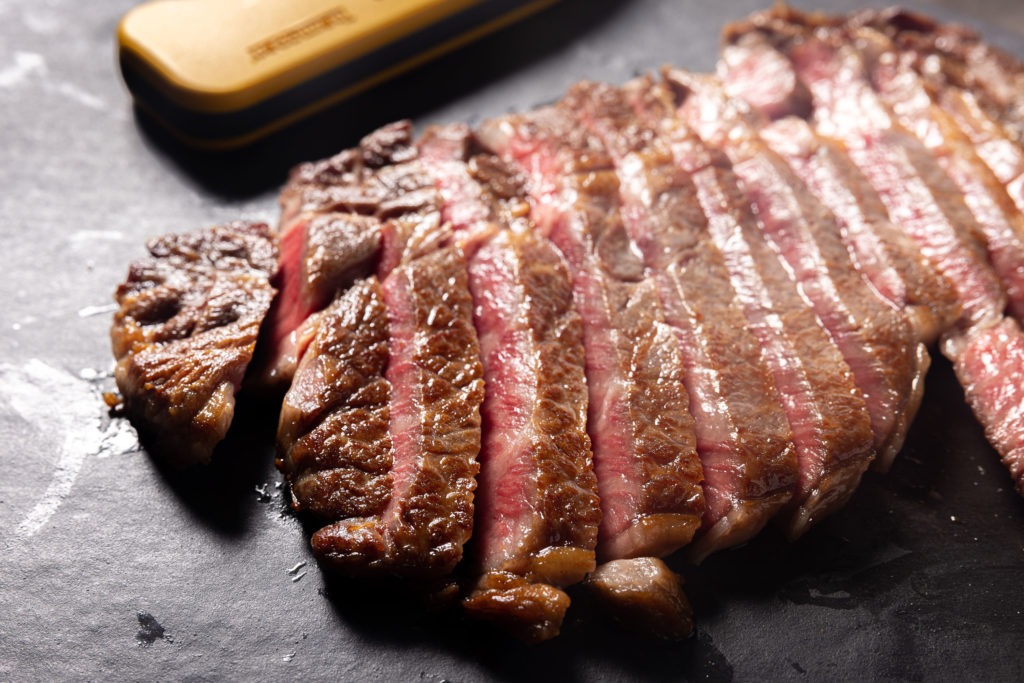
Conclusion
If you have something to celebrate, if you want something unforgettable, we hope that you get to try one of these steaks someday. And if you do, be aware that temperature matters so much. Keep the steak cold, salt it far enough ahead that the salt can sweat out some water, then clear that water up and sear it hard in an evenly heated pan. Use your Thermapen ONE to check its doneness, take it off the heat about 5–10°F (3–6°C) beneath your target doneness and rest it. Is it worth it? that’s between you and your wallet. But we are strongly inclined to say that yes, it is. Hopefully, you’ll get to try one. And if you do, that’ll be very, very happy cooking.
Shop now for products used in this post:
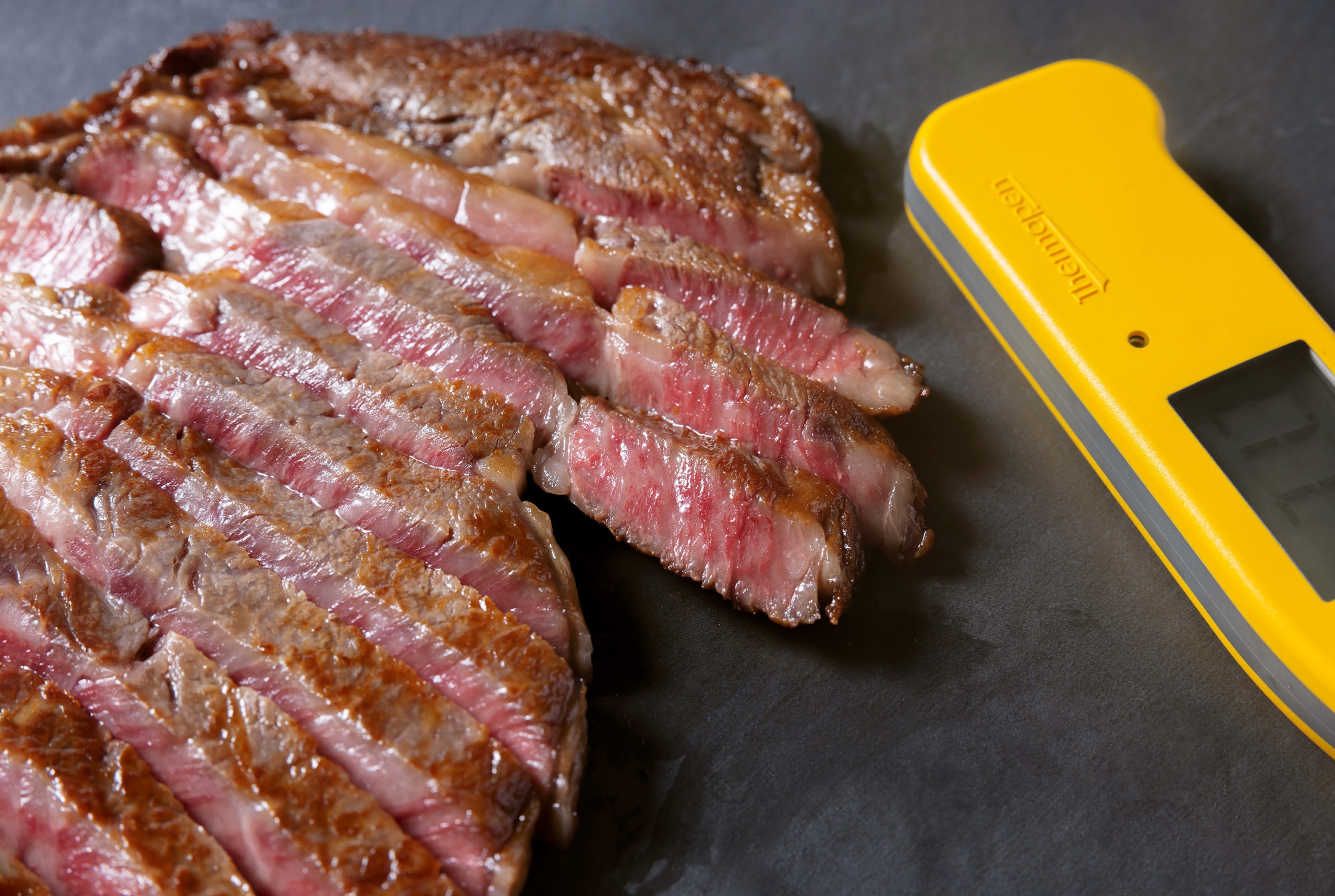

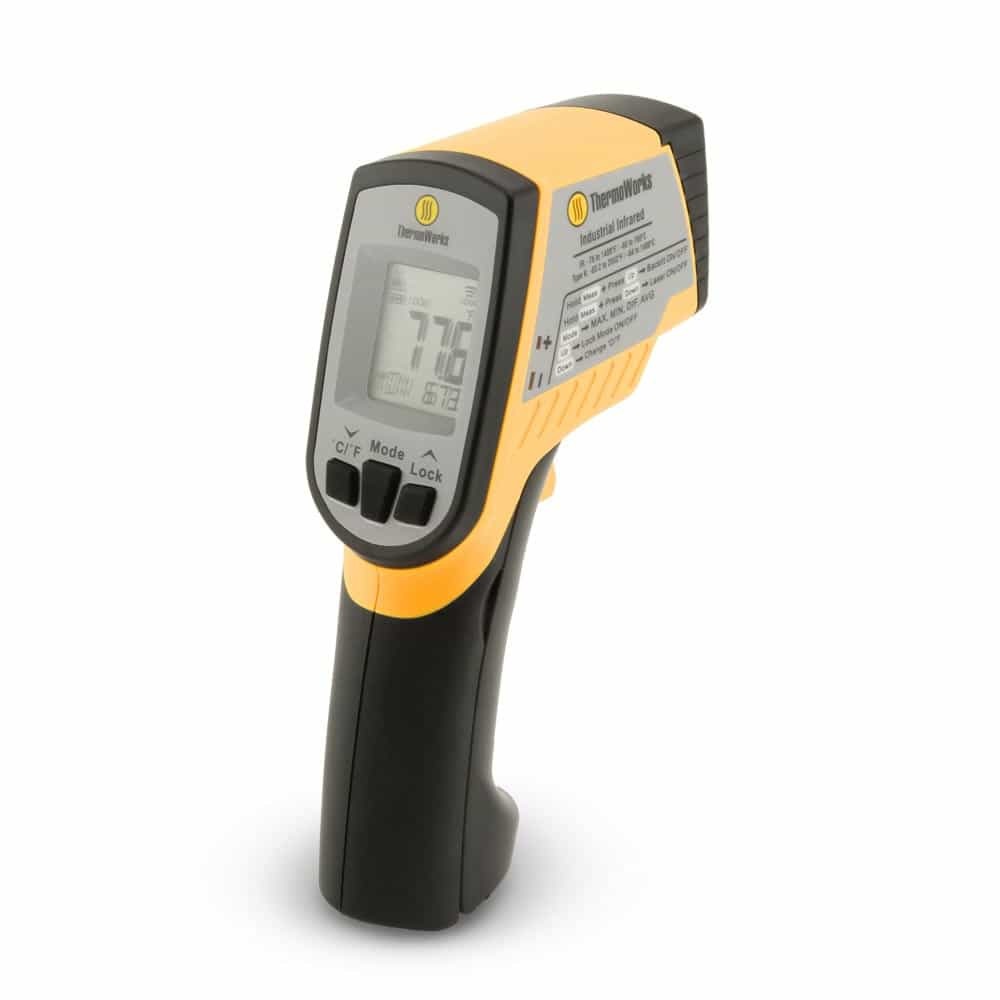

William F. Kluge says
Where is the best place to buy such a steak by mail order?
Martin says
We got ours from TheMeatery.com and find them to be an excellent source.
Brian Mallard says
I am fortunate to have purchased a whole A5 Waygu tenderloin. about 8 pounds. It was shipped frozen and is in my freezer still in that state. Any thoughts on how to thaw, cook and refreeze?
Martin says
Oooh! That is both exciting, and a difficult question. Thawing is easy. Put it in the fridge for a few days. One day for every 5 pounds is a basic guideline, but many shipped meats are frozen more deeply and may need more time. I’d give an 8-pounder three days to thaw throroughly.
Refreezing can be tricky. If you’ve thawed it correctly in the fridge, you can refreeze, provided it doesn’t sit out for long. Wrap the meat tightly (vac-seal is probably best) and put it back in the freezer. There may be a degradation in texture.
The refreeze becomes tenuous if you take a long time to butcher it into pieces. I’m curious about a tenderloin that weighs 8 pounds, though. That thing probably has a lot of butchering to go through before it becomes useable steaks/roasts. There may be significantly less of it by the time you want to refreeze it.
So, yes, you can refreeze, but thaw it carefully and get the parts you want to refreeze back into the freezer quickly.
Russ Gardner says
What temp are you looking for with the heated pan?
Martin says
425°F
Laura says
I order my A5 Waygu from Crowdcow.com I love the recipes they provide for the meats and cuts I order, as well as their pairing recommendations e.g. fresh crisp salad greens &/or root vegetables sautéed in Waygu fat, amazing!
Laura says
Martin, thank you for suggesting to cook my waygu cold, everything I read said room temperature, I will definitely try cooking my next steak cold 🥶. Also thank you for your instructions on searing waygu, that was the one thing I missed about the waygu steak, I will give it a go 🙏🏻